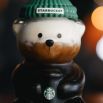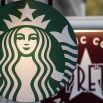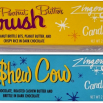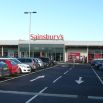Maryland is proud of its blue crabs, and the state has been funding "field trips" so that local restaurant chefs and seafood sellers can learn more about how the shellfish are caught and how their meat is prepared for delivery. In doing so, Maryland is hoping to convince people to buy the local supply of blue crab instead of the species that comes from Venezuela or the Philippines. Over 300 chefs and seafood managers have participated in the outings.
In past years, blue crabs from Maryland have been more expensive. In fact, they cost approximately $5 more per pound than crabs from Asia or Latin America. Now, that statistic might be changing. An article in the Washington Post said, "Maryland’s and Virginia’s governors recently announced the largest crab baby boom in almost two decades, from 207 million juvenile crabs last year to nearly 600 million this year, according to a yearly winter dredge survey conducted by the states." The increase in the population might be due to the fact that the states have stopped the practice of winter dredge season. During that time, watermen would drag heavy traps along the marine floor. The traps caught some of the shellfish, but they also killed many pregnant female crabs, causing the population to drop dramatically.
Retailers are hopeful that the larger supply will translate to a lower price.
For some, taste is just as important a factor as cost. John Rorapaugh is the director of sustainability, green initiatives and sales for ProFish, a D.C.-based seafood supplier. In his estimation, there's no other crab like it. Unlike their counterparts in warmer climates, Maryland crabs store fat to keep warm during the winter. The fat has a yellow color that stands out against the white meat. “That’s what gives the crab a different taste,” Rorapaugh said. "It has a richness to it. Fat in any recipe has a richness."
Dan Hudson, owner of the Olney Grille, agrees. "We get it on Wednesday and it’ll last a week," he said. Though he still uses foreign craps for dips to save money, he insists on local crabs when cooking crab cakes. "It’s so fresh. Flavorwise, you can’t even compare."
Restaurants that choose to use Chesapeake product in their Maryland crab cakes and that agree to inspections are elegible to take part in Maryland's new True Blue program, just introduced over Memorial Day weekend. So far, 40 eateries have volunteered to partake in the program. Participants can display the True Blue logo on their menus to let customers know that they're buying local seafood.









